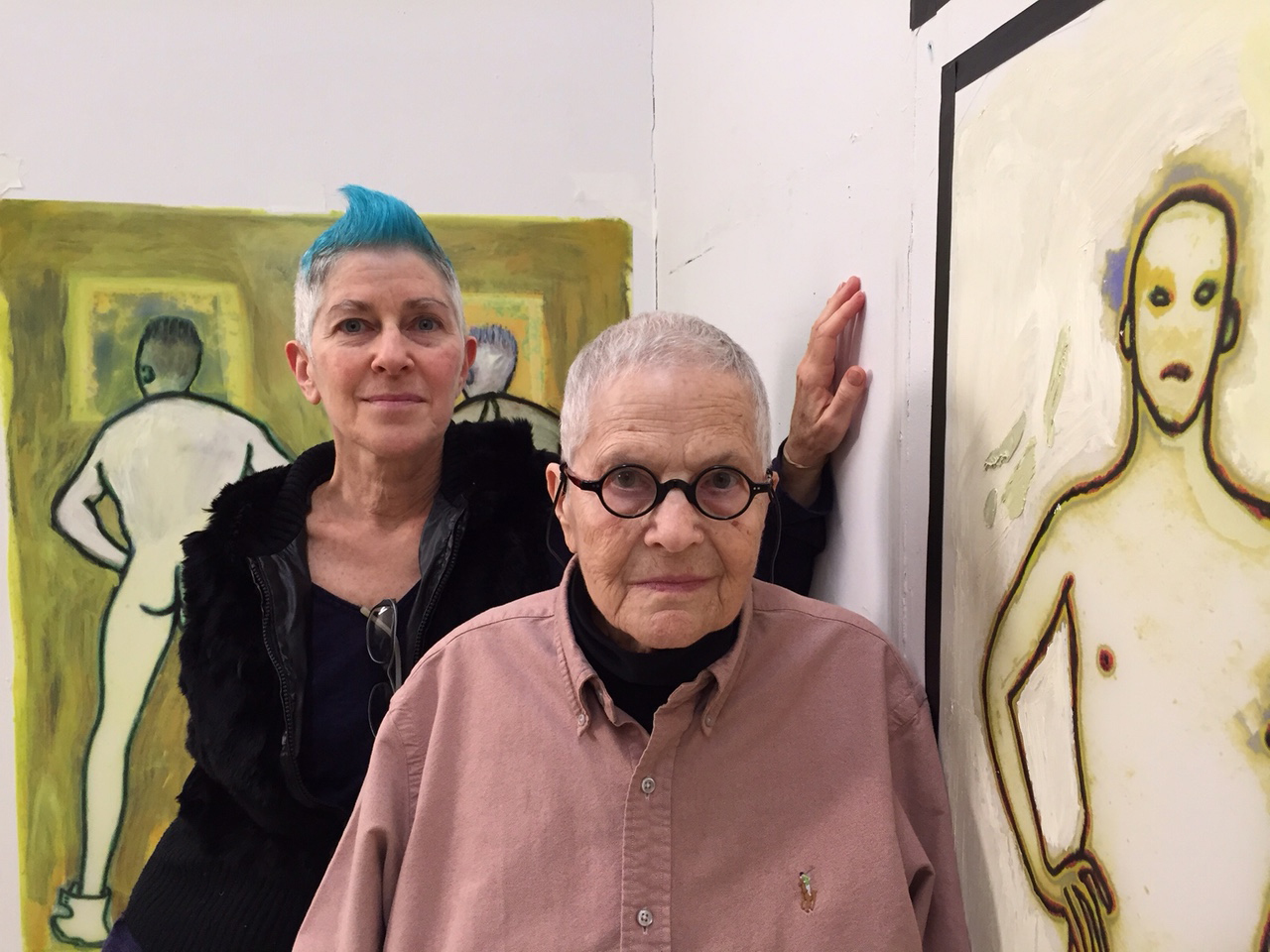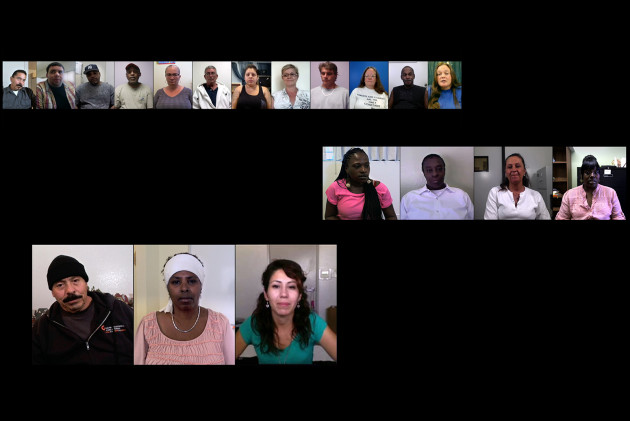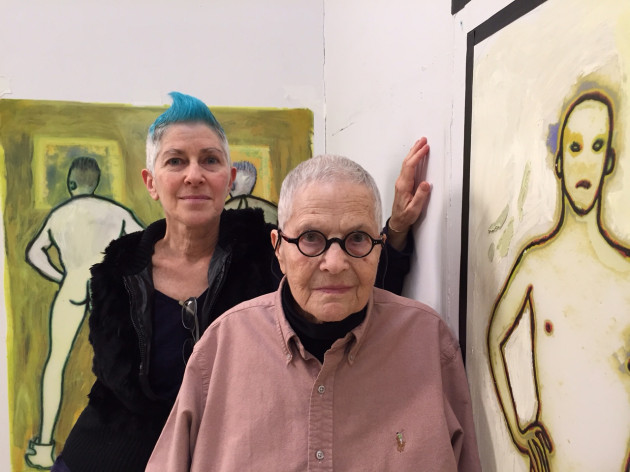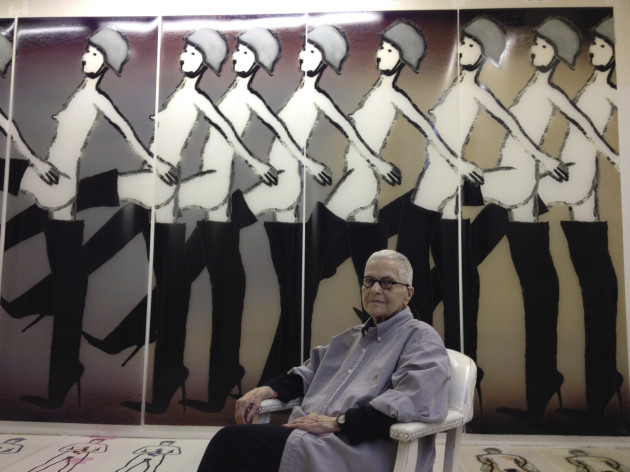
What Two Frank New Documentaries Tell You About Women’s Lives
Bookchin recently re-located from the faculty of the California Institute of Arts (CalArts) to Rutgers University’s Mason Gross School of the Arts, and if you may think her last name sounds familiar, yes, she’s proud her uncle was the renowned anarchist ecologist Murray Bookchin. She also presented at MoMA new adaptations for first-time theater screening of two of her 2009 gallery installations, “Testament” and “Mass Ornament.” (Her “Modern Mondays” event was also co-presented by MoMA’s Department of Media and Performance Art.) But those precious montage exploitations of YouTube exhibitionists, uncomfortably including many young women, were far outclassed by her new more moving and creative 45-minute piece. In a post-screening discussion with Sally Berger, Assistant Curator in MoMA’s Department of Film, Bookchin described her artistry: “My voice is in the editing.” Over two years of working with the hours of material, she found repeating themes to orchestrate as “choral moments,” where two, then four, then six, nine or more faces appear on the screen collectively saying the same poignant phrase, such as “this country”; “my neighborhood used to be”; “it’s hard”; “I want a job”; “I try not to give up.” Though each was interviewed separately, changing sets of faces linger on screen as if they are listening intently to each other in a group session.

Though one young woman wistfully admits to inventing fake Facebook profiles to escape her reality (MTV’s “Catfish” chastises such users while advising how to spot them), the rest would otherwise not be visible to get across their problems and issues on social media that has become the agora of our time. While “Long Story Short” is currently making the international film festival rounds, hopefully it will have wide distribution in the U.S. so it can be mandatory viewing for any candidate or voter in this election season.
Beth B has been a provocateur in the experimental media installation art and filmmaking scene in downtown New York City since the late 1970s. But when she introduced the first showing of her latest work, a loving and prodding portrait of her mother, the germinal artist known as Ida Applebroog, she emotionally described how in filming over the past two decades, through day jobs teaching and in commercial TV and while producing web series and public art, this effort felt different—“I had to make it!”

Filmmaker Beth B and her mother, artist Ida Applebroog
Audaciously not structured like a conventionally chronological bio-pic, Ida is first seen as an established star (she was named a MacArthur Fellow in 1998, at age 69), and continually returns to her Soho studio, surrounded by attentive assistants helping her clear out boxes and boxes and supported by gallery owners Ronald Feldman and Hauser & Wirth. Her close-cropped white hair and her prominent plastic glasses parallel another idiosyncratic Jewish woman icon her age who participated in a recent documentary—Iris Apfel of Albert Maysles’ “Iris,”, though Appelbroogs’s gradually encroaching frailty makes the completion of her daughter’s film well-timed for her still-active promotion.
On screen, the daughter constantly pushes her mother to get beyond a repeated rote introduction to her life—“I was born in the Bronx to Jewish immigrant parents”—until the reluctant older woman is ready to go deeper. Ida mostly connects her Jewish heritage to her furrier father’s Orthodox rigidity and disdain when each morning after his prayers thanking God for not being made a woman he would add: “Why did God punish me with three daughters?”—with none of Tevye’s affection. She also bitterly protests the same petty restriction that alienated my own grandmother from her similarly inclined father: “You couldn’t even tie your shoes on Shabbos!”
Beyond the usual childhood and family photographs, via the changing recording technologies Beth B utilized over the years, is a wonderful black-and-white taped interview with Ida’s no-nonsense mother, who delightfully reminds us of both her daughter’s strong personality and her budding filmmaker granddaughter, as she questions back and directs the camera angle. While in the film Ida frequently sneers at her mother as “illiterate,” in the subsequent Q&A she backtracked to add “genius,” to describe her mother’s sewing and design skills that gave Ida outfits as beautiful and scorned as Dolly Parton’s famous “Coat of Many Colors.” But Ida was unable to defend herself at school—the confident, articulate woman on screen spent her childhood struck almost silent from extreme shyness. She remembers her mother teasing her in Yiddish for being a shy little cow. Only late in life, in the most moving segment, does she link the family dynamics to the early death of her older sister.
The highlights of Ida’s art are the most personal, first in her dreams-inspired “Green Dress” series begun in 1969, and the journal diaries she kept as of 1974, on whatever paper was handy (1982’s is on a long roll) as they are seen being transformed into an extraordinary 2012 documenta (13) exhibition in Kassel, Germany that includes all the marginalia and tchotchkes collected over decades. (Her life seems to become a conceptual art collection, like the Vogels did for other artists, as documented in Megumi Sasaki’s “Herb and Dorothy.”) Looking back, she chortles in describing work at a “Mad Men”-like sexist advertising agency that just assumed she was quitting to get married in 1950, when she was really also switching to a job she preferred at the New York Public Library. But when for her husband’s career she moved first to Chicago, then to San Diego, she grew depressed in (a long and lasting) marriage and raising four children, and recorded, in bright orange: “I’m dying…Life was boring. I accepted it.”
Her name changes are redolent with symbolism: born Ida Applebaum, married into Horowitz, she found her artistic self as “Applebroog.” Starting from drawing Beth and her siblings, Ida turned images of herself and her family first into paper dolls, then into shadow puppets, then moved them around in short videos. (In Ida’s cohort of later-flourishing women artists I was reminded of my mother, the poet Charlotte Mandel, inspired by her family and aging, and by boomer Cindy Sherman’s use of her children.) But Ida’s cheerful display of explicit nudity, including full exploration of her own postpartum body in “Vagina Drawings,” resonates like Dr. Ruth Westheimer crossed with Our Body, Ourselves and Judy Chicago’s “Birth Project.” Off-screen, she admitted her notorious “Ethics of Desire” exhibit last year—life-size drawings of naked fashion models, frequently seen here as a backdrop—was incompletely rushed to meet a deadline, so she missed the contrasting and more diverse bodies she intended to include.

Ida Applebroog in front of “Marching Girls,” from her “Ethics of Desire” exhibit
In the post-premier discussion between mother and daughter collaborators, Ida regretted that the feminist art movement she helped nurture from the late 1970s, through the publishing collective and journal Heresies,was not flexible toward child-rearing, and admired how Beth integrates her personal and professional lives with her young daughter. As editor/producer/director, Beth joked she developed a “just do it” approach to persist on this project, and proudly described it as a family undertaking. (Her partner Jim Coleman scored the film with ambient music from his new album “Trees.”) She thanked her mother “for letting me in and sometimes not.”
Zeitgeist Films will release the 70 minute passionate portrait of and by these two feminist Jewish women in theaters beginning in June at the new Metrograph on the Lower East Side, not far from Ida’s studio.



